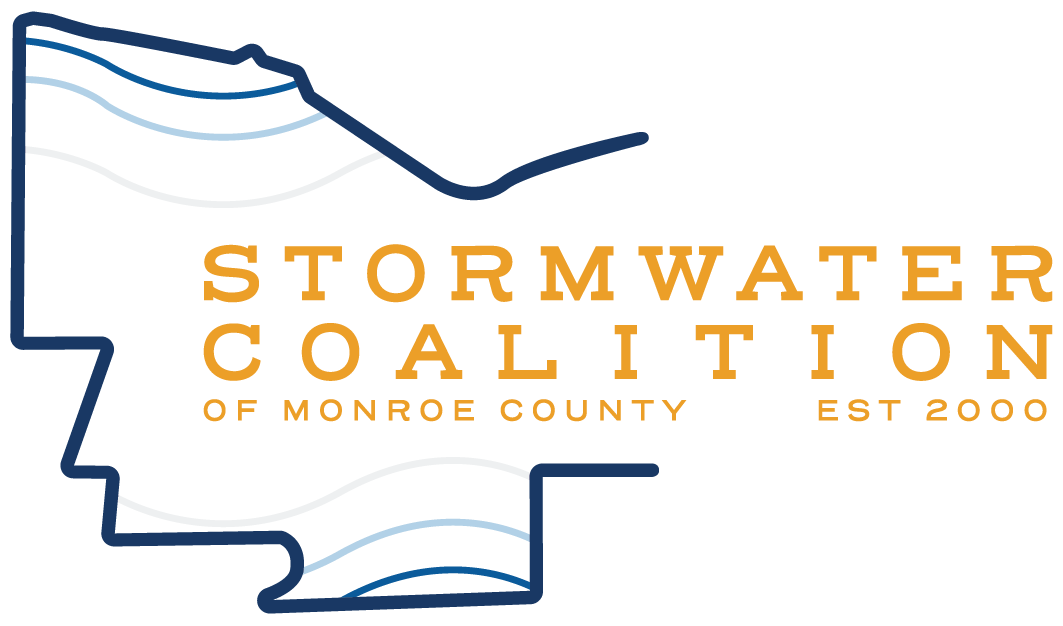Stormwater 101
What is Stormwater Pollution?
Stormwater runoff is generated from rain and snowmelt events that flow over land or impervious surfaces, such as paved streets, parking lots, and building rooftops, and does not soak into the ground. The runoff picks up pollutants like trash, chemicals, oils, and dirt/sediment that can harm our rivers, streams, lakes, and coastal waters. This type of pollution is significant because, aside from certain areas in the City of Rochester, stormwater runoff is not treated at a wastewater treatment plant and flows to our local waterways.
Point and Non-Point Source Pollution
Our water becomes polluted in many ways. “Point source pollution” occurs when factories or wastewater treatment plants discharge materials into a river or lake via a pipe. This type of water pollution is closely regulated under existing programs. “Nonpoint source pollution” (sometimes called stormwater pollution) refers to pollution from rain that runs off land, rooftops, paved surfaces, and lawns. Runoff picks up pollutants such as sediments, automotive fluids, and fertilizers and pesticides from our lawns. Eventually, this polluted runoff finds its way to the nearest waterway. Controlling nonpoint source pollution is very challenging because it occurs wherever there is snow or rain.
Storm Sewers
We see it during every storm automotive fluids creating a colored sheen mixed with rain or snowmelt on parking lots, trash, cigarette butts, animal waste, and misapplied lawn treatments washed into storm drains.
You can identify a storm sewer by the grated drains found along roadways and within some low-lying and seasonally wet (swale) areas. They collect excess stormwater from rain and snowmelt that does not soak into the ground, and convey it to streams, rivers, and other local water bodies through and outfall, which is the end of the pipe.
Illicit Discharge
Illicit discharges can come from a wide-range of sources including illegal dumping of paints, hazardous wastes, and wash-water, as well as improper connections of sanitary sewer lines or laundry waste to the stormwater system. Illicit discharges can seriously degrade water quality and are a widespread problem especially in commercial and other high risk areas. However, because these sources are intermittent, and sometimes not visible, they often go undetected.
If you suspect an illicit discharge contact your municipality and report it.
Stormwater Management Ponds
Stormwater ponds are bodies of water in commercial and residential developments that collect and store stormwater runoff. These ponds improve water quality and control water quantity. Stormwater ponds reduce pollution and prevent downstream flooding. Stormwater ponds can be attractive or can become eyesores depending on how they are managed.
Stormwater Wetlands
Stormwater wetlands are shallow marshes constructed as part of the land development process. These facilities are carefully designed to filter pollutants from stormwater runoff and thus protect our local streams, bays, and lakes in Monroe County. Stormwater wetlands also help to prevent flooding.
Green Infrastructure
Green Infrastructure is an approach to managing stormwater pollution that protects water quality by soaking water into the ground rather than creating runoff. Rain gardens and rain barrels are popular examples of green infrastructure that can easily be installed by Monroe County homeowners.
